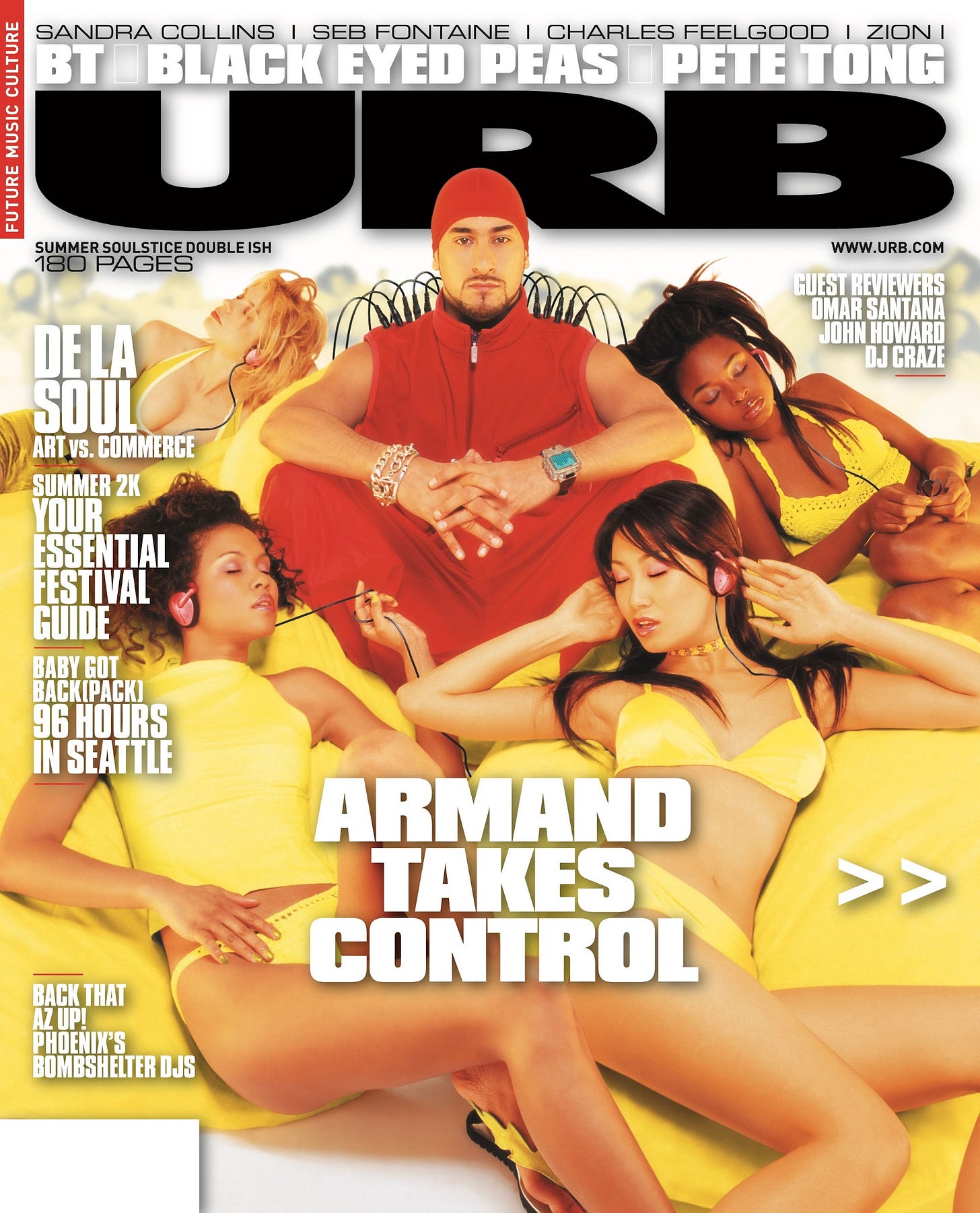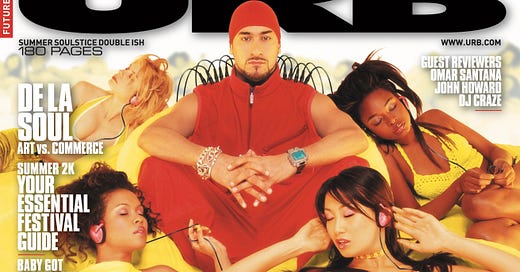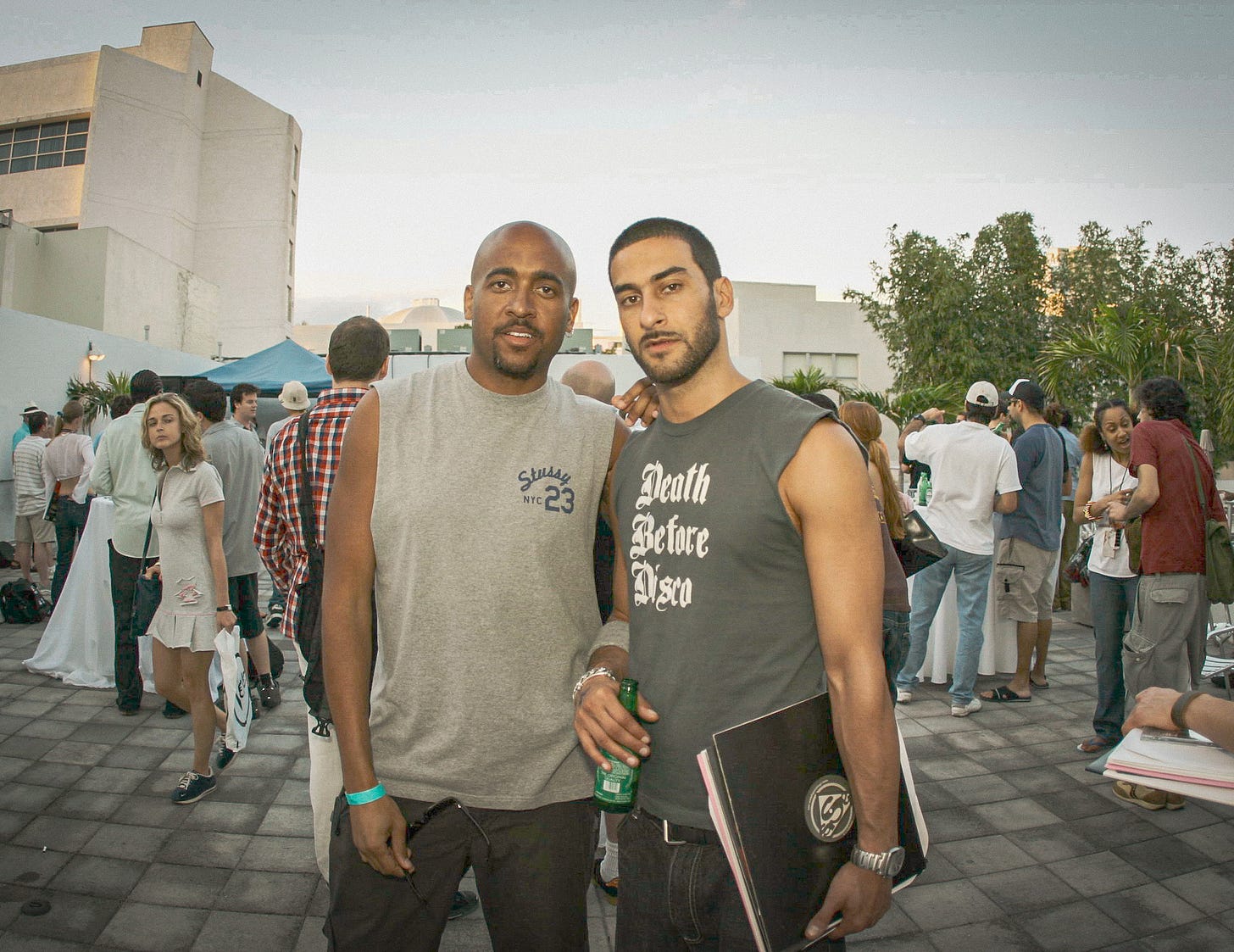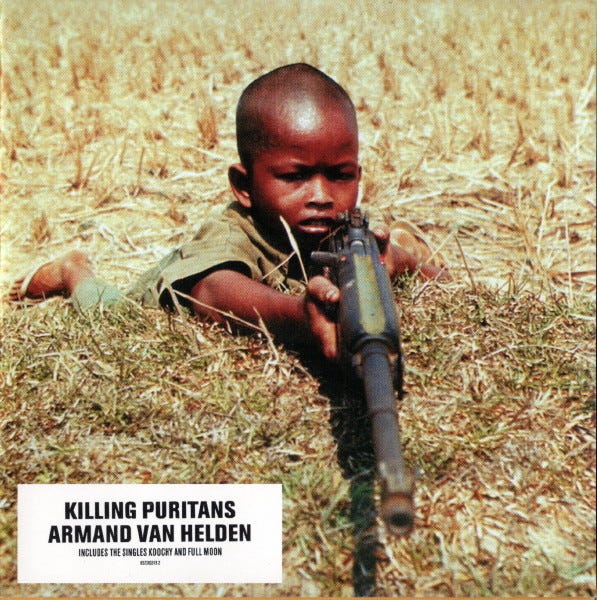Our Summer 2K Cover: A Candid Reassessment
An occasional look at the good, bad, and questionable in the URB Archive

One thing I hadn’t considered when I started this Substack and dug into our 20-year and 158-issue archive was how our content would feel 15, 20, or 25 years after it was first published. My memories of the magazine are complicated, as I’ve written here, and as I skim through digital files and physical issues, it’s clear that time and perspective can change things further.
I also want to preface that the criticism here and elsewhere on this Substack will rarely have anything to do with the artists we covered. The writing here comes with the luxury of hindsight and, for me, an examination of many years of editorial output. It also shouldn’t be a slight to our creatives or their teams. As the magazine’s CEO and pilot of this Substack experiment, I’m happy to own any missteps, perceived or real.
Much has been written about the “woke” era we’re living through, for better or worse. The question of what is OK, inclusive, or properly calibrated for this new era of social awakening and reconciliation is a constant in the world of content creation. I’ve debated with young and older coworkers about documentaries we’ve made and how to address certain topics. I constantly examine social content and entertainment at home, judging what my daughters consume. And at the same time, trying to see a new world through their young eyes, unencumbered by my baggage.
But in looking back at my role as a publisher, I’ve reflected on my past writings and the content of this magazine. I can easily point to plenty in URB’s pages that wouldn’t stand up to scrutiny today. When looking at 20 years of our covers, there are more than a few I’d like to do over.
Our July/August 2000 Summer Soulstice Double Issue featured longtime underground champ and friend of the magazine Armand van Helden. It was also our biggest issue ever, a walloping 180 pages overflowing with double-truck ads from Stussy, Playstation, Triple Five Soul, and Pioneer. It was a testament to our enduring underground influence and the pre-9/11 and pre-dot-com bust hubris that would be gone in 18 months.
URB had tracked van Helden’s tribal house productions since the early 90s, long before he’d find a late-career lift as one half of Ducksau ce, his duo with Jan/Feb 2000 cover star A-Trak. At the start of the ’00s, Armand was simply The Man, and we wanted a cover that reflected this status. The feature by frequent URB contributor M. Tye Comer was a deep and introspective career-long look at the DJ and producer. Van Helden speaks about house music’s lack of depth, the politics of his album Killing Puritans, and his quest to create more meaningful work on the heels of his commercial success.
“House is built on a vibe and an atmosphere, not built on a message or anything political. But I’m trying to bring more to the table than just beats.”—Armand van Helden
With the issue’s massive advertising haul, we could afford to fill our pages with the best writing and photography nationwide. Oliver Wang’s feature on De La Soul discussed their unknowingly prophetic album Art Official Intelligence. Hua Hsu tracked down Phoenix-based Bombshelter DJs and founding member DJ Z-Trip. Bill Werde covered Pete Tong, who was busy eyeing the US dance music industry as his next conquest. Elsewhere in the issue were newcomers Zion I, People Under the Stairs, and Seb Fontaine, plus established names Charles Feelgood, BT (aka Brian Transeau), and the Black Eyed Peas. Yours truly, along with contributor Heath K. Hignight, wrote about Napster, Metallica, and the downloading debate. And our resident hip-hop scribe James Tai’s feature on hip-hop DJs in rock bands opened with his signature swagger: “Back when most URB readers were still swimming around, playing Marco Polo in their daddy’s nuts, day-dreaming young punks used to fantasize about becoming rock & roll stars.”
Looking back at our Summer cover with four lightly dressed models draping the superstar DJ, we might have had too much swagger for our good. I have to ask myself how much of the magazine’s creative decision-making was from the vantage of the male gaze. Our writers were predominantly male, even as three of the top four names on the masthead were women, including our editorial director, editor-at-large, and photo editor. Could I blame the era of Maxim, Stuff, FHM, and other “lad” mags we competed for shelf space with? This was also decades before Me Too, and I know I had a lot of mistakes and personal development still ahead of me. Or did we reflect what many publications had done for generations: lead with allure, some titillation, and, when in doubt, a hot girl?
Our image choice wasn’t lost on some readers. One letter to the editor asked if we were turning into Maxim, though on the same note, he also referred to the cover models with van Helden as his “ho’s.” The letter lamented our loss of “intelligent coverage of progressive, interesting music, and high-quality writing.” In our defense, beneath that cover was exactly that. And at least our models reflected the diversity we championed as a brand and not the homogenized beauty standard of the day. Another reader wrote, “It’s becoming a trend in the so-called ‘underground scene’ to use overtly sexualized images of women to sell magazines.” Ouch, but also, touché. One reader said he bought the issue despite the cover but said Armand looked like a “techno pimp.” It’s clear now that we might not have done our cover subject any favors here too.
“If I was only doing house for the money, then I would make ‘You Don’t Know Me’ all day, and obviously that’s not my thing. —Armand van Helden
The issue’s cover undoubtedly challenged some readers’ faith in our mission and values. In the pre-online commentary days, our mailed and faxed letters to the editor (and in the 90s, our voicemail line) were where they’d sound off. We printed as many letters as possible, no matter how scathing. In the case of this cover, it would take me many more years to finally appreciate what some of them were saying. Culture at large is still reconciling with its placating of the male gaze through the accessorizing of media with women’s bodies.
In reality, we don’t get do-overs from our past. Would I run this cover image again? No. Like several of our 2000-era issues, I’d take a much different approach, one less thirsty for newsstand attention and true to our best creative impulses. All I can do now is let history judge our contributions to culture as a sum of its parts and not just a few slick pages in the waning days of the last millennium. With two decades and thousands of words, images, and voices, there will be plenty of stumbles and bad calls. Thankfully, I think we were right, much more than wrong.
“Direct the sticky contents of your open mind, keys to the house in Kauai, forgiveness, and 4200 square feet of prime office space to…” —Issue 76 Masthead
Thanks for reading. Please like, share, or comment. It helps.







Personally I didn't care for the cover at the time. My take was that it cheapened a culture that by 2000 was commodifying at a rapid pace, and as a scene we were wary of signs that the corrupting influences of the wider world were crowding in on our sacred spaces.
Which was bollocks. 1) Purity tests will eventually wreck you, because you will always come up short at the end. 2) Our scene survived because it allowed itself to not be confined by sanctimony. 3) URB was great about not taking itself too seriously. This stuff was supposed to be about fun.
It would seem out of place now, and that's fine. That was a long time ago, and that we're more sensitive to things like that are a great measure of progress. After all, URB was about the future.
Was literally talking about this with Jason Wagenheim (former Blender, now Bustle) last week.